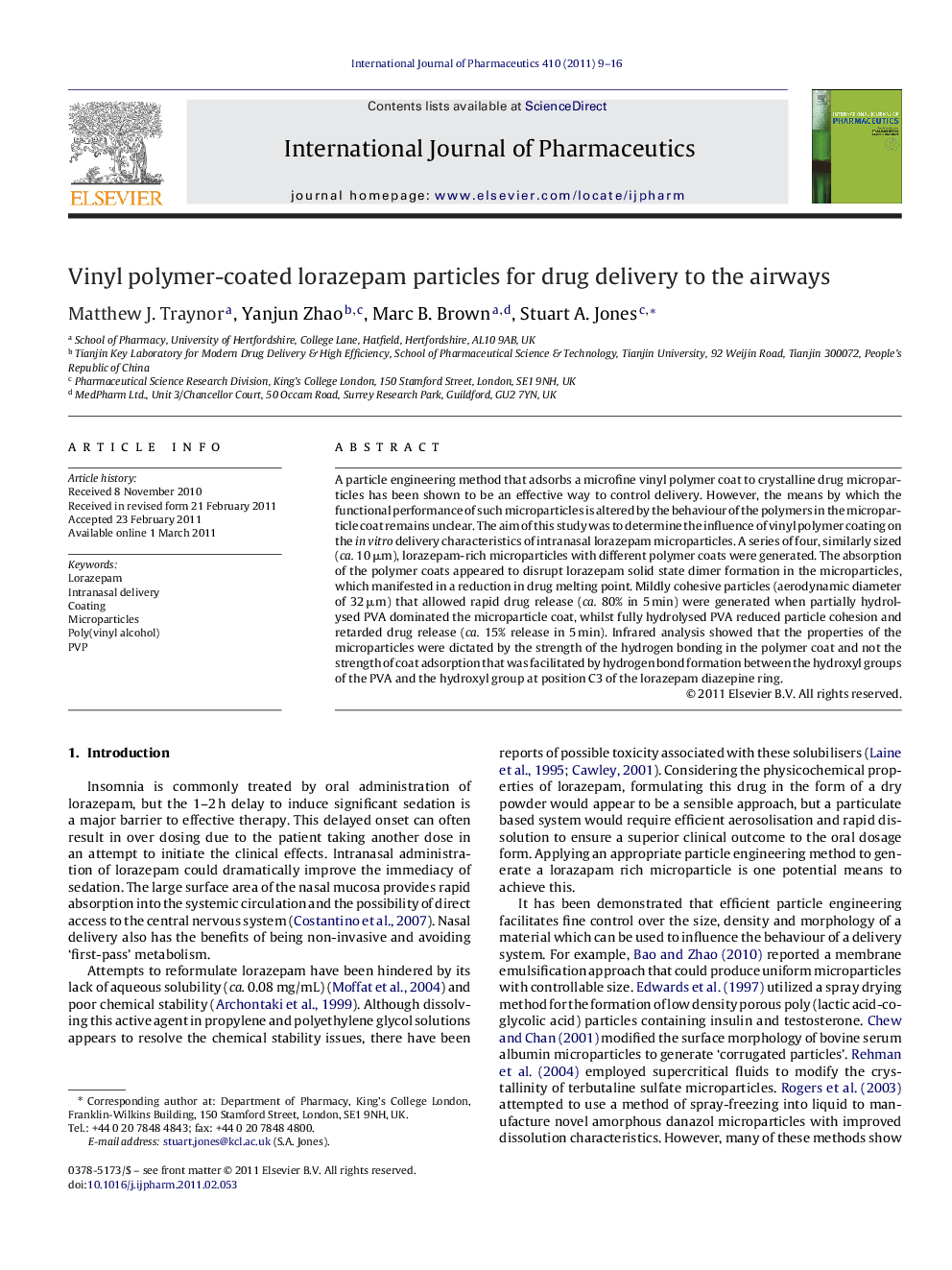| Article ID | Journal | Published Year | Pages | File Type |
|---|---|---|---|---|
| 2503330 | International Journal of Pharmaceutics | 2011 | 8 Pages |
A particle engineering method that adsorbs a microfine vinyl polymer coat to crystalline drug microparticles has been shown to be an effective way to control delivery. However, the means by which the functional performance of such microparticles is altered by the behaviour of the polymers in the microparticle coat remains unclear. The aim of this study was to determine the influence of vinyl polymer coating on the in vitro delivery characteristics of intranasal lorazepam microparticles. A series of four, similarly sized (ca. 10 μm), lorazepam-rich microparticles with different polymer coats were generated. The absorption of the polymer coats appeared to disrupt lorazepam solid state dimer formation in the microparticles, which manifested in a reduction in drug melting point. Mildly cohesive particles (aerodynamic diameter of 32 μm) that allowed rapid drug release (ca. 80% in 5 min) were generated when partially hydrolysed PVA dominated the microparticle coat, whilst fully hydrolysed PVA reduced particle cohesion and retarded drug release (ca. 15% release in 5 min). Infrared analysis showed that the properties of the microparticles were dictated by the strength of the hydrogen bonding in the polymer coat and not the strength of coat adsorption that was facilitated by hydrogen bond formation between the hydroxyl groups of the PVA and the hydroxyl group at position C3 of the lorazepam diazepine ring.
Graphical abstractFigure optionsDownload full-size imageDownload as PowerPoint slide
